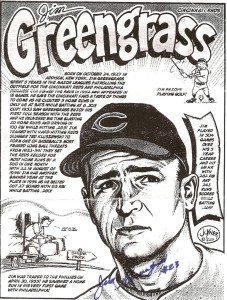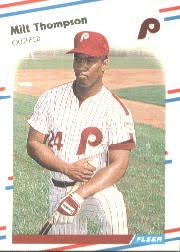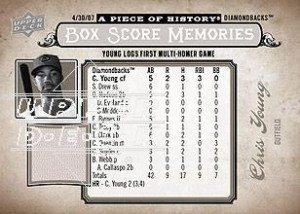
Baseball artist Ronnie Joyner is a throwback. His work harkens back to the 1960s and before, as he gives every former major leaguer a curtain call in history’s spotlight. The autograph collector and die-hard fan explained his vintage techniques.
Q: Tell me how to describe one of your creations. It’s unfair to call them ‘caricature art.’ Each artwork says and does so much more.
A: It’s been hard to describe my drawings in a concise way. Caricature, although that’s what a lot of people call them, isn’t quite right because my portraits are realistic. That’s why I just settled into “bio-illustration”. It, in itself, isn’t very descriptive, but it’s the best I can come up with. Where space permits, I usually define “bio-illustration” by saying “a realistic pen-and-ink or pen-and-pencil player portrait surrounded by biographical text and cartoons.”
Q: What medium are you working in?
A: The bulk of my drawings are done with pen and brush in black ink on DUO-SHADE board. Here’s the deal with DUO-SHADE. It is a newspaper production product that saw it’s use peak from the 1960s through the 1980s. Newspaper production artists and cartoonists used it because you could create camera-ready (old term) gray areas without the need to halftone the piece, thereby compromising the crispness of the solid black linework. Therefore the control was in the hands of the artist instead of someone who might not be very good at creating nice halftones with the stat camera (another old, antiquated term).
With DUO-SHADE, the artist inks all the solid black line-work, then paints a clear water-like developer on the areas where he wants tone to appear. That process brings out the thin 45-degree angled hatch lines that, in the case of my work, make up the tones of the face. These hatch marks are invisible on the DUO-SHADE board until you paint on the developer. There are two bottles of developer with DUO-SHADE. One brings out one set of 45-degree hatch marks, and the second brings out the opposite set of 45-degree hatch marks, thereby making that area an even darker tone. DUO-SHADE a great product that, although most people don’t know the technical reasons why, allows my work to have that vintage feel of the guys from past eras.
Sadly, though, DUO-SHADE was finally discontinued by the only manufacturer. You can blame computer technology for making it obsolete. I have enough stock to do another 25 drawings, then it’s over.
The other medium in which I do my bio-illustrations is pen, brush, ink and pencil on coquille board. These pieces look distinctly different from my DUO-SHADE pieces, yet they also have a vintage look because coquille board is also an old-school newspaper production product. Coquille board has a pebbly surface. First, the artist inks all his solid black line-work, then uses a deep black pencil to add the shading. The pencil shading sticks only to the high points of the coquille boards pebbly surface, thereby acting as an instant halftone device. It’s brilliant because, like the DUO-SHADE, it keeps the artist’s black line-work solid and crisp while giving him complete control over the “half-tone”. Broken record here — coquille board is also now discontinued (at least the “fine” grade that we use), and I have only a couple sheets left. There is still a “coarse” grade being make, but it’s too rough to give the look I really want, but I’ll use it in a pinch.
I have no idea what I’ll do once I run out of my old stock. It may be time to move on to a new approach, but I’ll do it grudgingly.
Q: How can collectors learn more about you or purchase your work?
A: Unfortunately, my work is most likely not seen unless you’re an SCD reader or a member of the Historical Societies of the Washington Senators, Philadelphia Athletics, Boston Braves or St. Louis Browns. I’ve built a website covering all of my various baseball activities, but I’ve never got around to posting it. People can be directed to the Philadelphia Athletics Historical Society website to see many of my bio-illustrations.
They sell prints there and all proceeds go to the society. I’ll always field questions, too, if people want to write me:
Ronnie Joyner, 7780 Traeleigh Lane, Charlotte Hall, MD 20622
rjoyner@tbiinc.com
Former players who’ve been given the star treatment by Joyner adore his work. One MVP called his bio-illustration “better than a baseball card.”
Tomorrow, the artist shares some of the praise baseball alums have bestowed.
Like this:
Like Loading...




